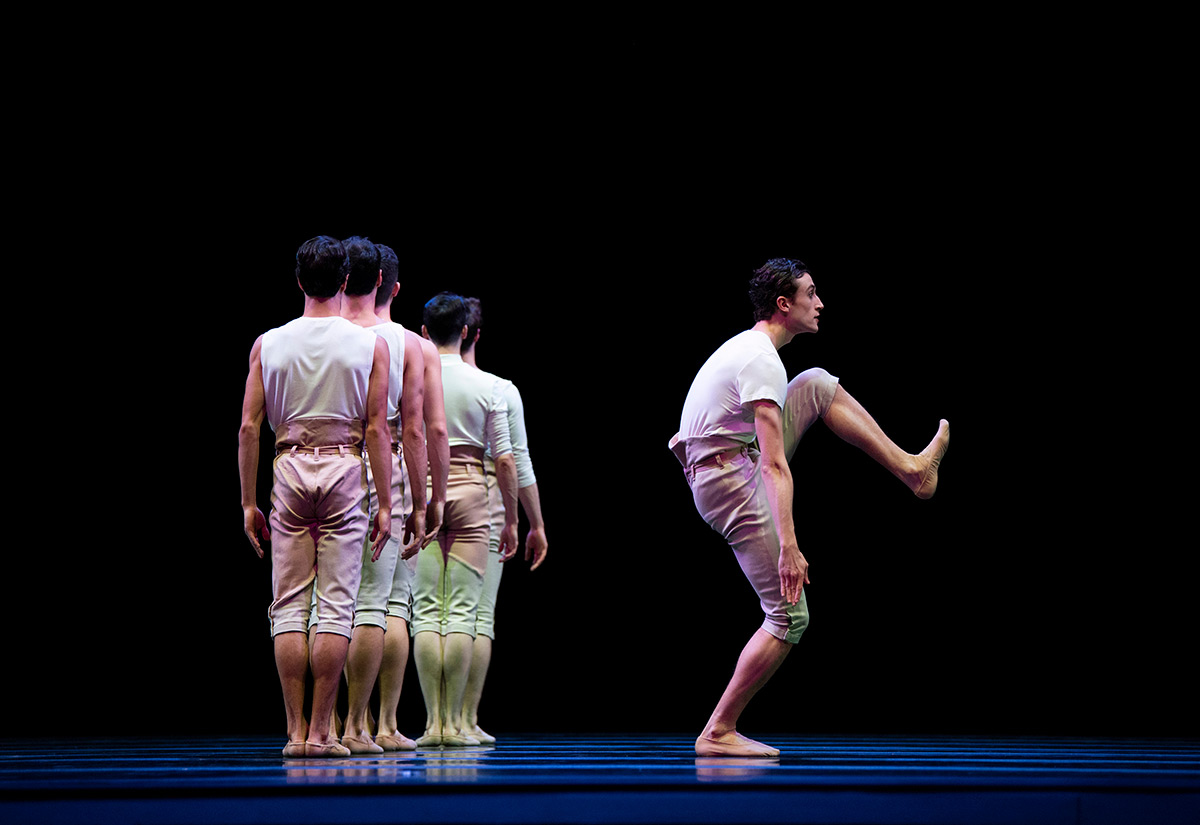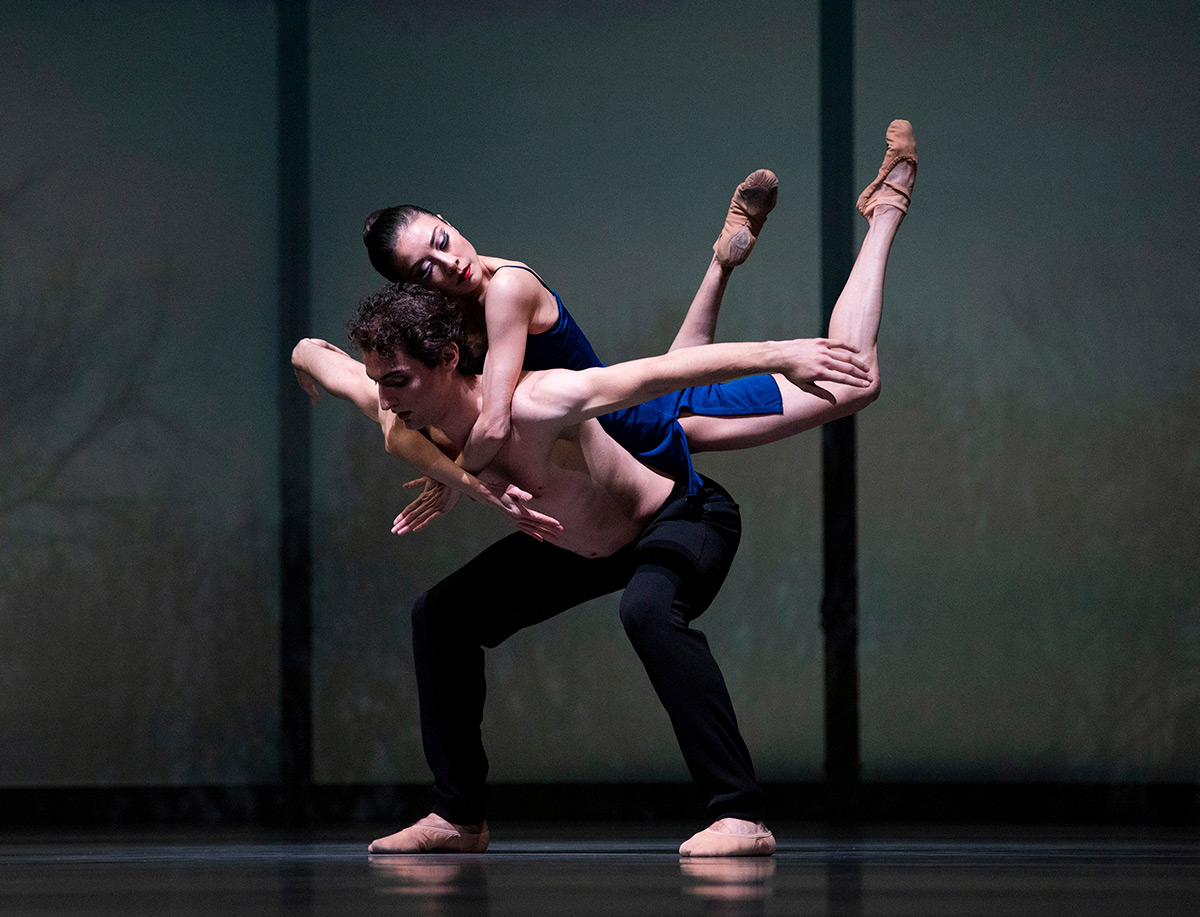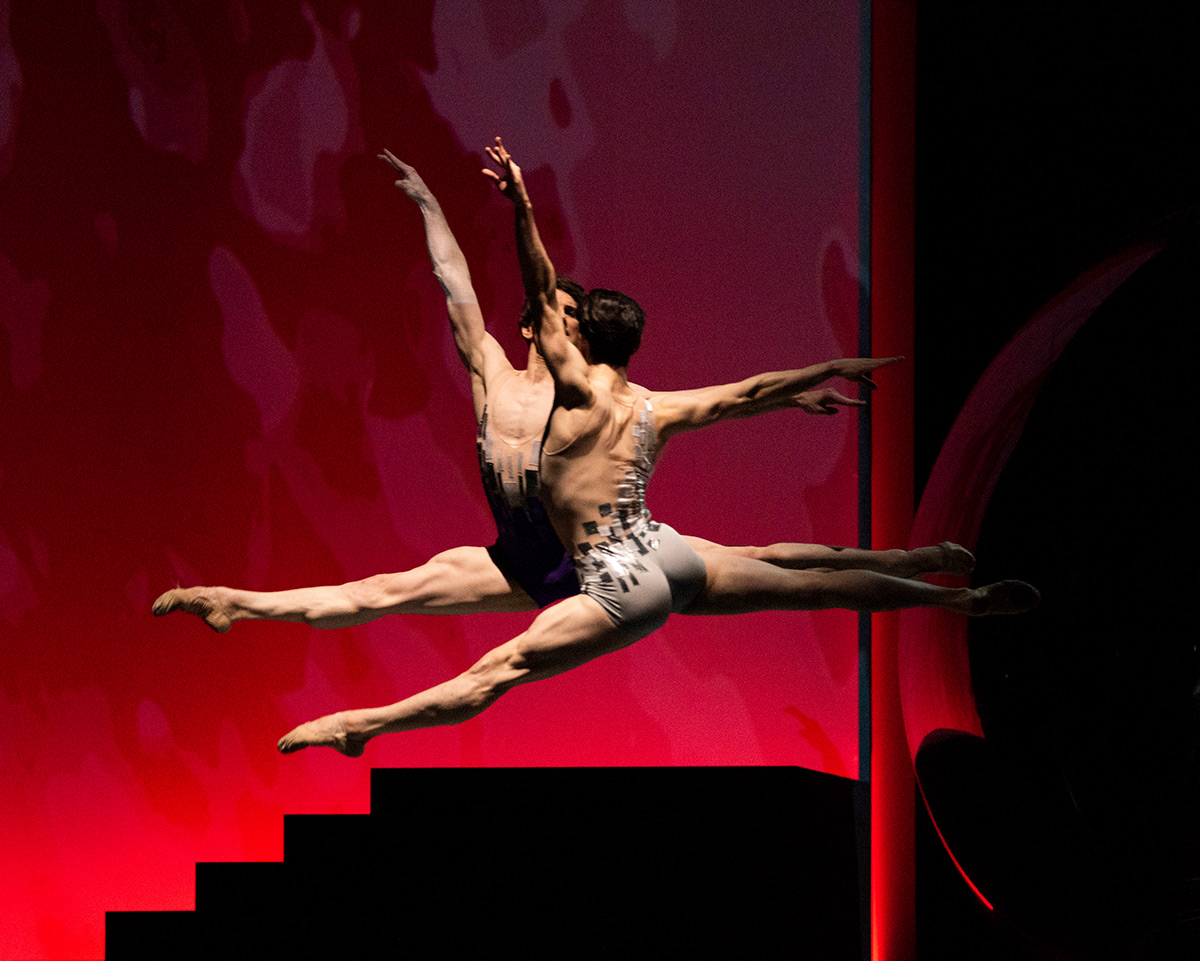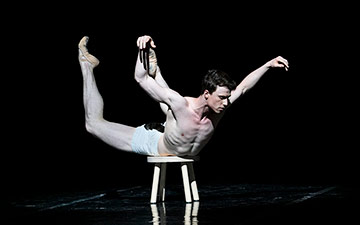
© Erik Tomasson. (Click image for larger version)
San Francisco Ballet
Program 5, Lyric Voices: Your Flesh Shall Be a Great Poem, Bound To, “…two united in a single soul…”
★★★✰✰
San Francisco, War Memorial Opera House
27 March 2019
www.sfballet.org
San Francisco Ballet have been busy and as we bid March farewell, two more triple bills have just made their debut. Both include new ballets along with returning work from last year’s Unbound Festival. Program 5, titled Lyric Voices, welcomed back Trey McIntyre’s Your Flesh Shall Be a Great Poem and Christopher Wheeldon’s Bound To and the new work came from Yuri Possokhov.
Both McIntyre and Wheeldon are choreographic favorites at SFB, so it’s no surprise that their Unbound contributions would receive an encore run. I, too, am a big fan of their work, but not particularly of Flesh and Bound. Both are fine ballets, but each faces challenges that affect their impact.

© Erik Tomasson. (Click image for larger version)
Having said that, McIntyre’s Flesh does have a lot going for it. Reid Bartelme and Harriet Jung’s costumes for the men (khaki, high-waisted clam diggers and white shirts) suggest an earlier time; Chris Garneau’s folksy, emo score contributes nostalgic whimsy; and McIntyre’s choreographic episodes definitely take the viewer on an emotional ride. Bookended by two high-throttle solos by Benjamin Freemantle, the middle vignettes all embody distinct qualities. An early group sequence for the men has adolescent camaraderie to spare. A sprightly pas de trois for Jennifer Stahl, Sasha DeSola and Jaime Garcia Castilla evokes equal parts flirtation and temptation. With floating lifts and airy turns, Isabella DeVivo and Steven Morse’s pas de deux is all about youthful abandon. And through purposely off-balanced movements, Freemantle’s final solo communicates uncertainty and vulnerability.
But Flesh is one ballet where program notes feel essential to really understand what’s going on. Everyone has their own opinion about program notes – some love them, some hate them. I don’t fall squarely into either camp, but I do believe they should be a tool, rather than a necessity. And Flesh’s protagonist role is also a bit curious. Freemantle appears at the beginning and the end of the dance, but is strangely absent while the rest of the cast embark on a journey through time and tone.

© Erik Tomasson. (Click image for larger version)
Absence was at the heart of Wheeldon’s emotionally charged Bound, an ensemble work that tackles a cacophony of urgently topical narratives. Technology and attention, detachment and isolation, social engagement, loneliness and even death all come up during Bound’s ever-changing landscape. A sense of desperation underscores the entire ballet, as does a combination of live and recorded music, which felt quite a poetic parallel – engagement with real people versus engagement with technology.

© Erik Tomasson. (Click image for larger version)
Bound has a number of strong scenes, including its opening. Imbued with manic scrolling fonts, the transparent scrim rose to reveal a community completely engrossed in their phones. They hunched forward to get a better view of the screens, arms flinching and shoulders contorting. The first to lose her phone, Dores André ran frenetically around the space, unsure of what to do or where to turn. Eventually all the phones disappeared and tentative attempts at human connection pervaded the space. A duet for André and Stahl found them cautiously clasping hands and pressing the soles of their feet together. As his arms flailed and jumps violently pulsed him off center, a tortured, distraught sadness fell over Lonnie Weeks’ final solo. Bound tries to cover a lot of urgent ground in its single act. While both admirable and important, this can also leave the viewer wondering what the ballet is trying to say. And many of the partnering transitions looked clunky. It wasn’t clear whether the choreography itself had awkward moments, whether the dancers were having challenges, or if these points of awkwardness were meant as narrative threads, reflecting the difficulty of connecting with others.

© Erik Tomasson. (Click image for larger version)
Closing the Lyric Voices program was the evening’s world premiere by SFB Choreographer-in-Residence Yuri Possokhov, “…two united in a single soul…”. While not a linear expression of the Narcissus myth, the ballet mines its plot points and characters. Joseph Walsh’s Narcissus spends time admiring his reflection in the water, and engaging with that water, which in two united is embodied by two principal couples and a corps of eight. Things don’t go well for him in the end. Sadly, when it came to two united, I think the same is true. Its narrative was clear. But the piece was overflowing with collaborative devices while the choreography – save some bravura jumps for Walsh and a humorous variation for the men – was thin. Dramatic set pieces covered the stage: a flight of stairs, a giant silver orb and red glowing flats. Projections abounded everywhere. And throughout the piece, Countertenor Aryeh Nussbaum Cohen wandered through the scene, contributing hauntingly emotive vocals (his voice was beautiful, but where were the supertitles?). One of these additions would have been more than sufficient. As with Dance Theater, do too much and something will get lost – here, an ocean of theatrical elements swallowed up the choreography.

















You must be logged in to post a comment.